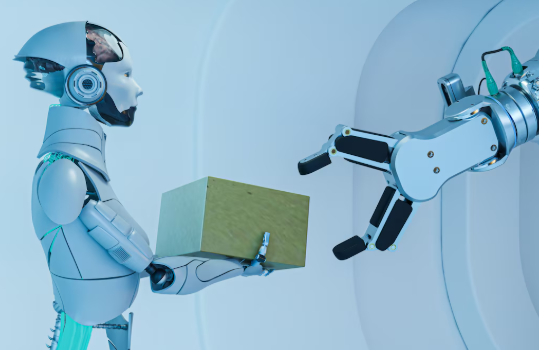Discover how advanced quality engineering ensures smarter, more efficient chatbots through AI innovation, robust testing, and strategic AI application in business. STL Digital leverages cutting-edge QE frameworks and AI solutions to help enterprises deploy high-performing, reliable chatbot systems at scale.
AI’s Role in a Hyper-Automated World
The evolution of chatbot technology has moved swiftly from scripted response trees to context-aware, intelligent agents powered by generative AI. With enterprises rapidly integrating AI solutions into customer experience, support, and internal operations, the quality and reliability of these systems have become mission-critical. Advanced quality engineering (QE) plays a pivotal role in scaling these AI applications in business while ensuring performance, security, and contextual accuracy.
A KPMG survey found that 65% of U.S. executives believe generative AI will have a high or extremely high impact on their organization within the next 3 to 5 years.
Why Traditional Testing Fails with Generative AI Chatbots
Legacy testing frameworks were designed for deterministic systems where outcomes are predictable and test cases are finite. Generative AI, by contrast, introduces variability. A chatbot built on a large language model (LLM) like GPT can provide multiple correct responses to the same prompt, depending on context and training.
This unpredictability poses a unique challenge. Testing has to go beyond verifying outputs to assessing:
- Language fluency and tone
- Ethical alignment and bias mitigation
- Relevance and accuracy of dynamic content
- Model drift and hallucination risks
Advanced QE frameworks must leverage Artificial Intelligence in test automation, data generation, and performance benchmarking to ensure that generative AI chatbots behave within acceptable guardrails while remaining adaptable and scalable.
Key Pillars of Quality Engineering for AI-Driven Chatbots
- Conversational Test Design
- Scenario-driven test cases with persona mapping
- Intent coverage and fallback accuracy measurement
- Data-Centric Testing
- Synthetic data generation for edge cases
- Bias and toxicity detection in training datasets
- Continuous Monitoring and Feedback Loops
- Real-time logging of user interactions
- Incorporation of feedback for model fine-tuning
- Security and Compliance Validation
- Adherence to data protection norms (e.g., GDPR)
- Robust authentication and access controls
- Performance Testing at Scale
- Load testing for concurrent conversations
- Latency monitoring across APIs and endpoints
These practices ensure not just technical soundness but also contextual appropriateness, a necessity in customer-facing applications.
AI Innovation in Quality Engineering Toolchains
AI-powered quality engineering (QE) is not merely reactive—it actively enhances testing through intelligent automation, thereby reducing time-to-market and revealing vulnerabilities beyond human detection. Consider the following AI-driven capabilities:
- Machine learning models predicting gaps in test coverage.
- NLP-based systems generating dynamic, adaptable test scripts.
- AI observability tools monitoring chatbot interactions to flag anomalies in real time.
McKinsey’s analysis confirms that approximately 75% of generative AI’s potential economic value is concentrated in just four domains—customer operations, marketing and sales, software engineering, and R&D. In software engineering specifically, GenAI can improve productivity by automating tasks like code generation, debugging, and design—accounting for 20–45% of current annual spending in that function.
The Strategic Value of AI Application in Business Chatbots
Chatbots are increasingly vital for automating workflows, reducing support costs, and enabling 24/7 availability. But their effectiveness hinges on end-user trust and enterprise confidence in their reliability.
Advanced QE ensures:
- Chatbots align with brand tone and policy
- Escalations happen correctly and contextually
- The system is resilient across languages and channels
For businesses, this translates into:
- Faster deployment cycles
- Reduced risk of reputational harm from rogue AI outputs
- Better ROI on AI investments
McKinsey estimates that generative AI could unlock between $2.6 and $4.4 trillion annually in economic value across various business functions.
Generative AI’s Impact on Quality Assurance Culture
With generative AI, quality assurance becomes a cross-functional concern. Developers, data scientists, compliance officers, and QA engineers must collaborate on shared goals of explainability, robustness, and ethical output.
Organizations need to:
- Establish governance frameworks for AI testing
- Train teams in AI literacy and prompt engineering
- Leverage cross-disciplinary QE dashboards for transparency
STL Digital, for instance, embeds advanced quality engineering into its end-to-end AI solutions, enabling enterprises to deploy intelligent chatbots with confidence and agility.
From Quality Assurance to Quality Intelligence
As AI applications in business grow, especially in the form of generative AI chatbots, the scope of quality engineering must evolve. It’s no longer about validating code—it’s about instilling trust, compliance, and performance into every interaction.
By embracing AI innovation in quality engineering, enterprises ensure their chatbot systems are not only efficient and scalable but also ethically aligned and contextually aware.
Quality engineering is the silent force behind every intelligent conversation, and STL Digital helps enterprises achieve this by integrating advanced QE practices with AI solutions to deliver trustworthy, high-performing chatbot experiences.



